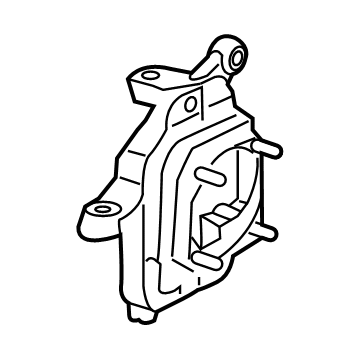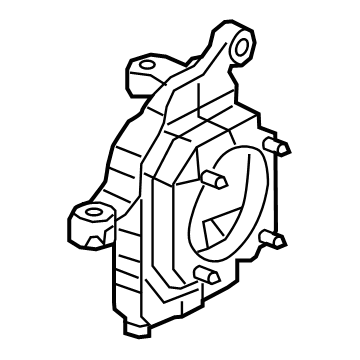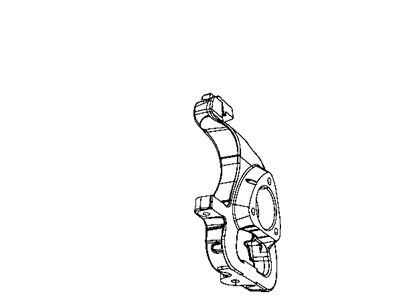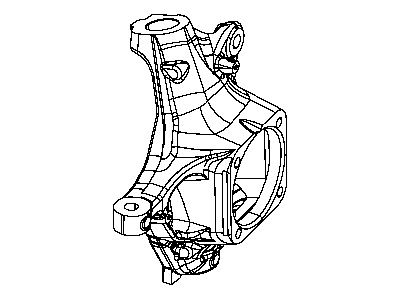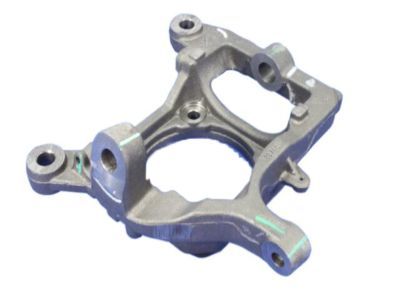
My Garage
My Account
Cart
Genuine Ram 3500 Steering Knuckle
Front Steering Knuckle- Select Vehicle by Model
- Select Vehicle by VIN
Select Vehicle by Model
orMake
Model
Year
Select Vehicle by VIN
For the most accurate results, select vehicle by your VIN (Vehicle Identification Number).
12 Steering Knuckles found

Ram 3500 Suspension Knuckle Front Right
Part Number: 68449576AA$425.70 MSRP: $651.00You Save: $225.30 (35%)




Ram 3500 Front-Steering Knuckle Spindle
Part Number: 68217027AA$372.28 MSRP: $604.00You Save: $231.72 (39%)



Ram 3500 Steering Knuckle
The Steering Knuckle of Ram 3500 vehicles is a very essential part that joins the suspension and the steering mechanisms to the wheels to ensure stability in rotation. These Knuckles come in all sorts of flavors, some are one-piece incorporating the spindle, the others that include a hub depending on whether the car is rear-wheel drive or front/all wheel drive. Steering knuckles have evolved from the kingpin types to the modern types of knuckles, and the modern knuckles are long lasting parts that can easily undergo the wear and tear of use and only need replacement if they are damaged. It is highly advised that knuckle stud bores, spindles, and bushings get checked and inspected periodically for efficiency and safety measures.
Looking for affordable and high-quality auto parts? Then you have already arrived at the proper online shop. We offer all Ram 3500 Steering Knuckle at great affordable prices. Moreover, all genuine Ram 3500 Steering Knuckle come with a manufacturer's warranty. In the long run, you would realize you have saved a lot of trouble and money with OEM parts from here.
Ram 3500 Steering Knuckle Parts Questions & Experts Answers
- Q: How to Remove and Install a Steering Knuckle on Ram 3500?A:Loosen the wheel lug nuts, raise the vehicle and support it securely on jackstands. Remove the wheel. On 4WD models, unscrew the driveaxle/hub nut with a socket and large breaker bar. Brace a large prybar across two of the wheel studs or insert a large screwdriver through the center of the brake caliper and into the disc cooling vanes to prevent the hub from turning as the nut is loosened. Remove the disc brake caliper and disc. If equipped, disconnect the electrical connector from the wheel speed sensor and remove the sensor. Disconnect the tie-rod from the steering knuckle. Remove the driveaxle/hub nut. Support the lower Control Arm with a floor jack. Separate the lower control arm from the steering knuckle. Separate the upper control arm from the steering knuckle. Remove the knuckle. Carefully inspect the steering knuckle for cracks, especially around the steering arm and spindle mounting area. Also inspect the balljoint stud holes. if they're elongated, or if you find any cracks in the knuckle, replace the steering knuckle. Installation is the reverse of removal. Tighten all suspension fasteners. Loosen the wheel lug nuts, raise the vehicle and support it securely on jackstands. Remove the wheel. Remove the hub bearing and axle shaft. Disconnect the tie-rod end or drag link from the steering knuckle. Remove the wheel speed sensor. Loosen the steering knuckle upper ballstud nut a few turns, but don't remove it. Remove the lower balljoint nut. Use a balljoint separation tool to detach the balljoint from the knuckle. Remove the upper balljoint nut. Separate the steering knuckle. Use a brass hammer to knock it loose if necessary. Installation is the reverse of removal. Tighten all suspension fasteners.






